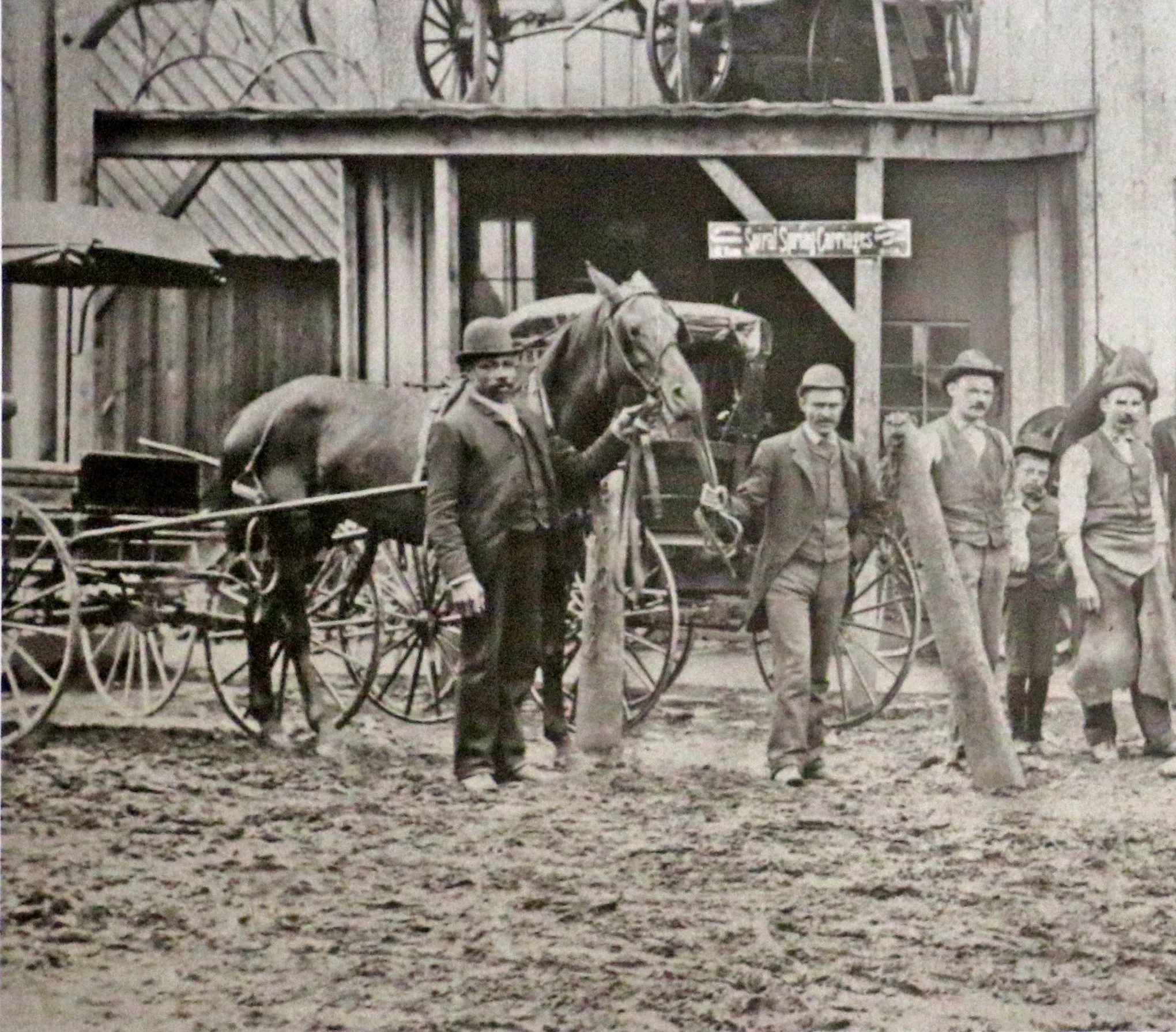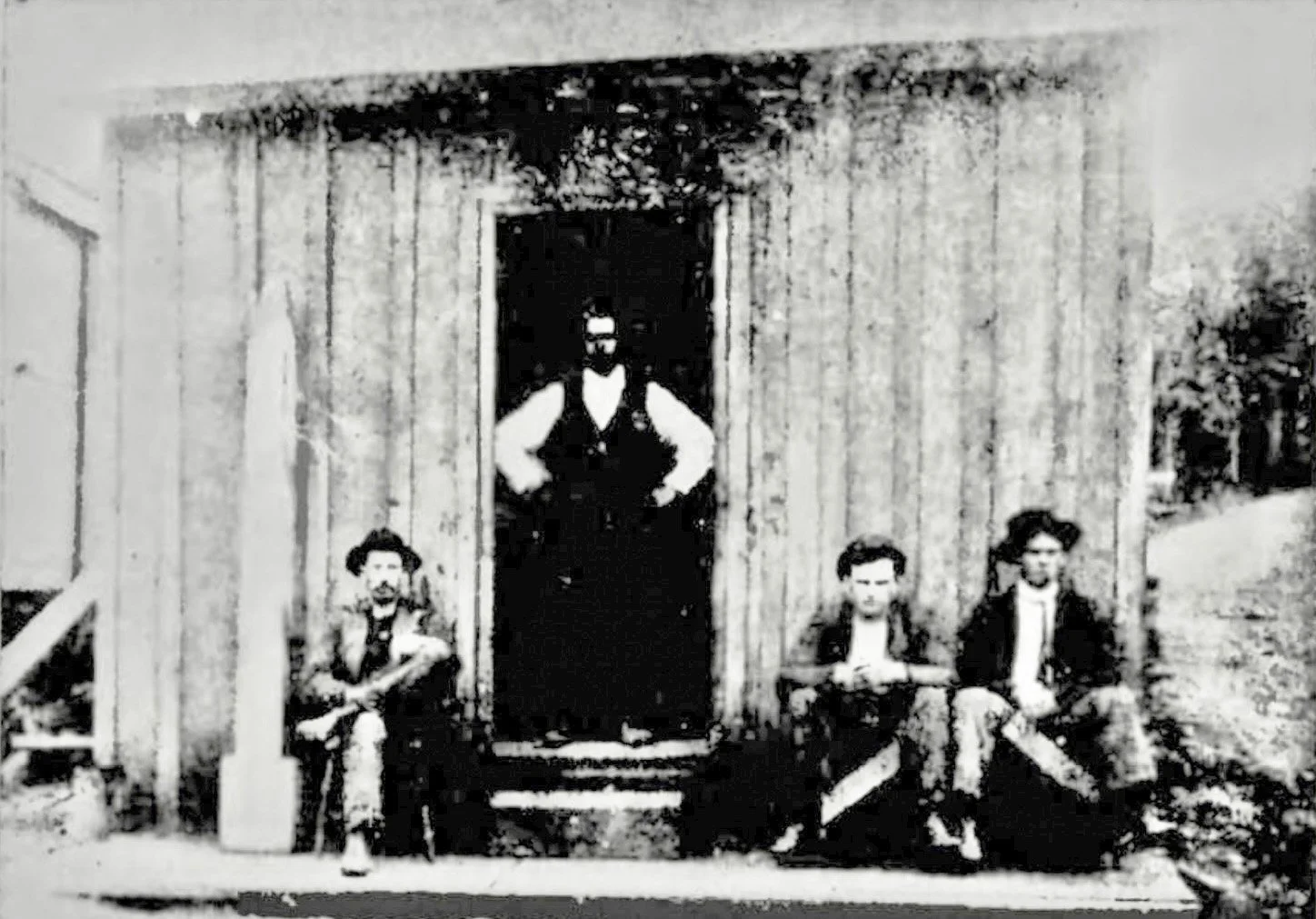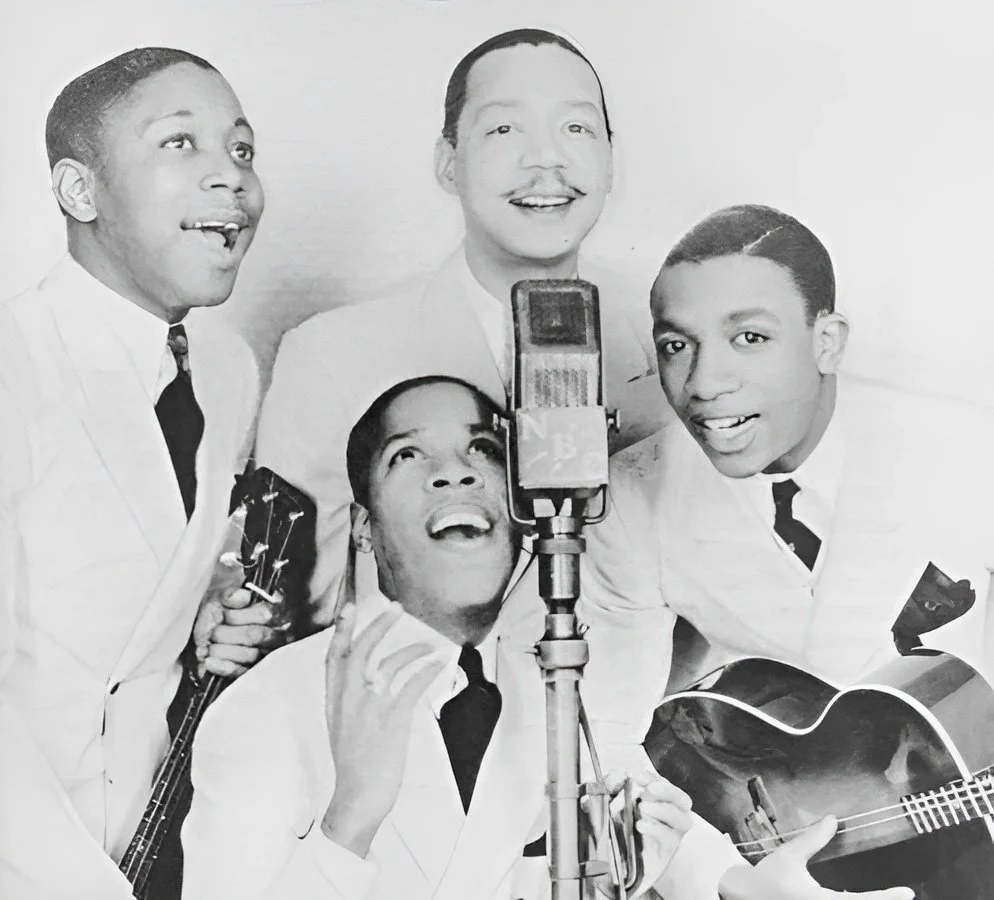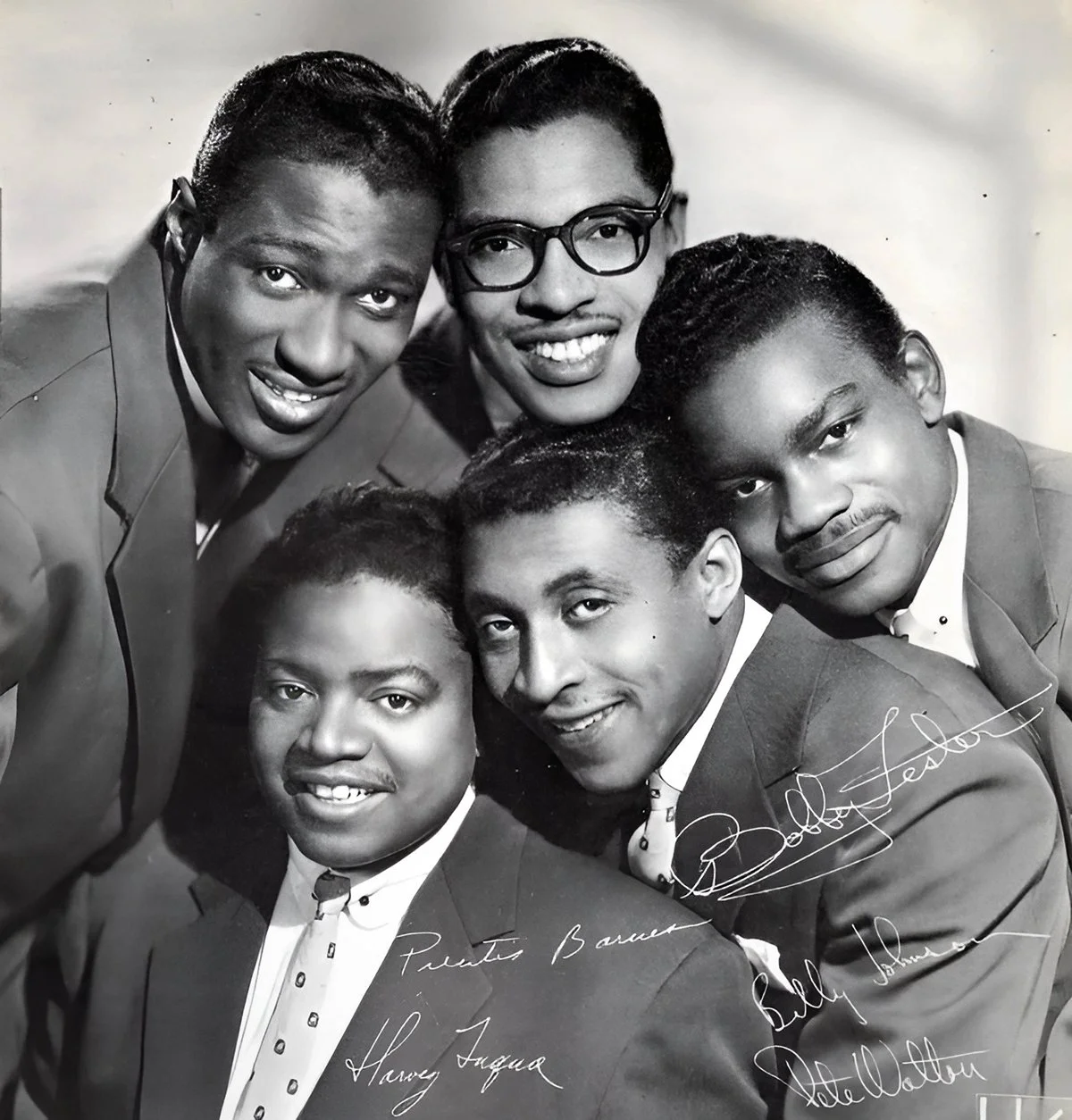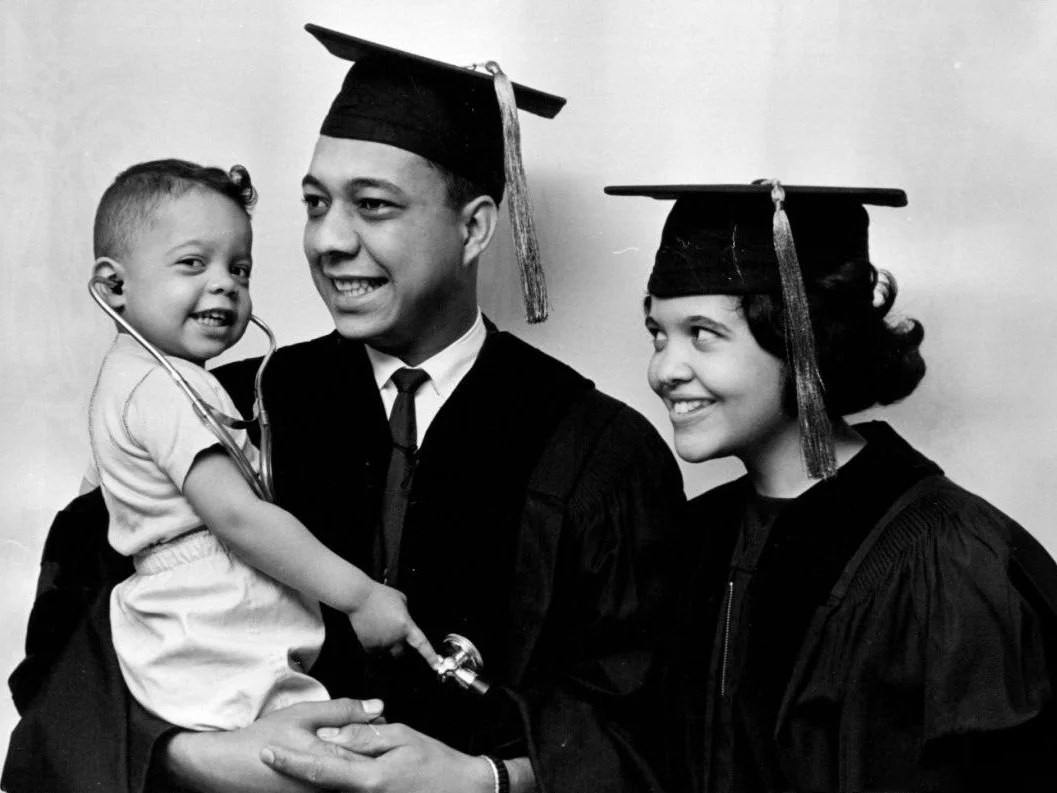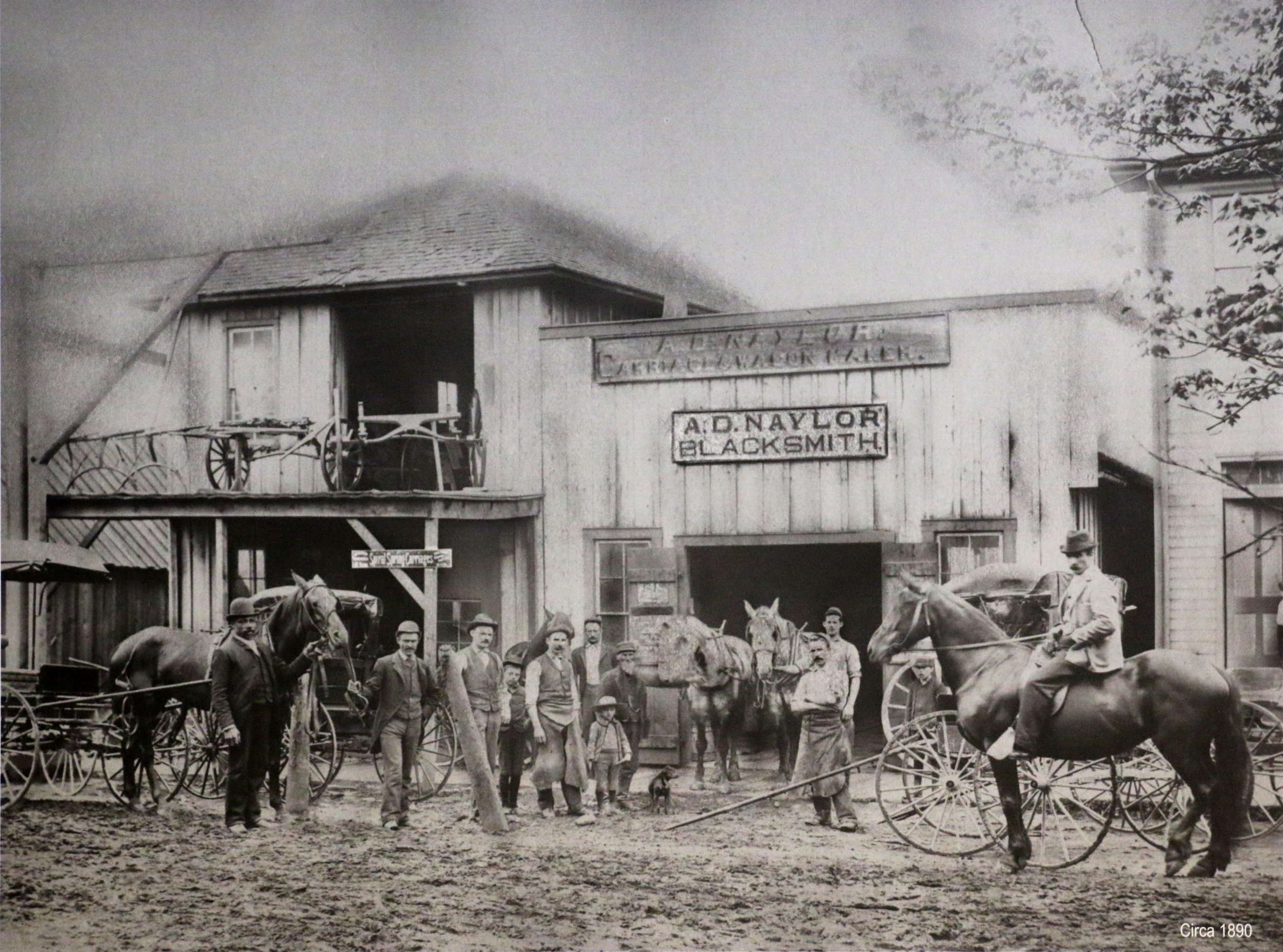
A Rural Community of Color.
Once part of Garrett County’s founding years, many African Americans helped place the railroad destinations of Oakland, Mountain Lake Park, Loch Lynn Heights, and Deer Park on the map.
But why is Garrett County’s minority population roughly just one percent?
As destination rail travel waned and The Great Depression shuttered businesses, employment opportunities dwindled, and hiring practices were often inequitable. Nearly all of the county’s African Americans left to find work, taking their family legacies with them.
MLPHA is slowly reassembling a lost culture.
COLEMAN DANDRIDGE
[1801-1898]
Coleman Dandridge is the earliest known African American to live in Garrett County. Dandridge was enslaved in Richmond, Virginia, and sent express to Oakland for Miss Otto Cullen, who freed him. He became a coachman for William P. Trotten for 25 years. “Old Coley,” as he was fondly called, and his wife Caroline ran the Dandridge House, a boarding house for people of color. After his wife died in 1896, he moved to Cumberland to live out his life with his daughter. When asked of his age, Coleman replied, “I’spect I’se nigh onto eighty-five yars of age.” Legend has it, he was “better known than any other person in Garrett County.”
EDWARD YOUNG
[1815-1898]
A Civil War veteran from Talbot County, Edward Young belonged to the Maryland 7th Regiment, US Colored Infantry, Company D. Young was a long-time, dapper servant to Dr. Edmond Goldsborough who fought for the Confederacy and had a summer place in Oakland. Young’s funeral service was at St. Matthew's, officiated by the A.M.E. Church pastor, J.H. Scott. Annual Memorial Day services honor Young’s patriotism at the Oakland Cemetery by placing a U.S. flag and wreath on his grave.
OSCAR NOTES
[1853-1935]
Oscar Notes was revered as a meticulous custodian of the Garrett County Courthouse from 1905, the day it was built, until 1933, just two years before his death. He was eight years old in 1861 when he became an Oakland citizen. His family was held in bondage by Edward McCarthy Armstrong in Keyser, West Virginia. Amidst the Civil War, Oscar’s family fled the Armstrong property during a Union occupation.
-
Notes was versatile, offering repair services for the A.M.E. Church, including fixing the roof in preparation for a summer of Sunday evening gatherings of the Allen C. E. League of which S. O. Swan was the president. His handy skills earned him praise. Oscar's second wife, Mary Allen Notes, was the grammar school custodian. She donated carpet for the A.M.E. Church aisles. The delightful couple had a reputation for willfully entertaining distinguished guests of the congregation. Oscar and Mary also owned and operated a successful boarding house on Green Street. They were the only African Americans to own shares in the new Farmers' Bank, and Oscar served as a member of the bank’s board of directors. Impressed by Oscar, Mr. E. Z. Tower, owner of a coal mine, made Notes his chief of staff to oversee hauling coal wagons from the mine.
FAMILY LEGACY
A.D. Naylor employed several blacksmiths, livery drivers, and men to harvest ice from Mountain Lake in the winter. A promotional photo shows off his staff in 1908. The business expanded to include a hardware store that is in a new location, and operational to this day. One employee, James Truly [1860-1904], was born and reared in Oakland. He became a horse groomer and porter for the Glades and the Commercial hotels. Truly was widely respected and known as a familiar face in the county.
-
He was the son of Sara and Eli Truly [1814-1877]. Eli was once in bondage and served the Union Army in the Civil War. He tragically died by falling into a well at the Corrigan House on Alder Street. Eli’s grandson Guy was a professional drummer for the P.G. Lowery Band featured with the Cole Bros. Circus. Eli and James are buried side-by-side in the Oakland Cemetery. James Denmark [1857-1930] from Monongalia County, West Virginia, was the son of Hattie Denmark and was employed by A.D. Naylor. His last known profession was listed in the 1900 U.S. Census as a janitor.
THE BANKS FAMILY
In 1860, West Virginia kept “Slave Records,” which led to the discovery of a family from Romney that remained largely intact after abolition. William A. Vance claimed Martha (35), Frances (13), John (10), Jim (8), Caroline (6), Mary (4), and Charles (2) as his property. Sarah M. McDowell listed Baker (23) and his siblings: Mary, Marshall, and Emily as part of an inheritance from Sarah’s father, who died in 1853.
-
In an 1870 post-Civil War U.S. Federal census, Martha, using the surname Banks, is listed as a housekeeper, domestic servant, and laborer. She lists her children: Frances (22), James (19), John (17), Lina (15), and Mary (12), along with three other children born after the 1860 “Slave Schedule” ended: William (10), Emily (3), and Robert (2). Oakland resident Baker Banks married Harriett Robinson and gave birth to George Augustus Banks in 1883. Growing up in Oakland, George was an outstanding student who later attended Morgan College in Baltimore. He then pursued his studies toward a medical degree from the School of Medicine at Howard University. His senior year was at Meharry Medical College in Nashville, Tennessee, where he earned his M.D. degree in 1912. He supported himself through school by working at hotels and dining cars during vacations. George was also known to be good at athletics. He practiced in Wheeling, West Virginia, as a medical examiner.
HANDY GIPSON
[1851-1891]
Handy Gipson was born in North Carolina in 1851. He resided in Oakland for about 10 years, building a fine reputation in town, offering hair cutting and shaving in his Oakland shop. He also became the first African American to serve jury duty in Garrett County. Before living in Oakland, Handy represented Preston County, West Virginia, as a delegate to the Republican Convention.
-
At age 40, Handy sought treatment at Johns Hopkins University Hospital for cancer of the tongue and throat. What appeared to be a successful procedure took a turn, and swelling led to his death. After Handy died, his widow Margaret remarried Albert J. Lee, a barber in Handy's shop. Handy fathered two daughters, Bessie and Grace. Bessie married a son of John Robert Clifford, the first Black West Virginia lawyer. Handy’s twin infants lie next to him at the Oakland Cemetery.
CHARLES FAQUA
[1910-1971]
Handy Gipson’s grandson, Charlie Fuqua, was a founding member and baritone for the doo-wop singing group, The Ink Spots, in the 1930s and 1940s. Charlie’s mother Grace was born in Oakland. He sang harmonies with Bill Kenny, Deek Watson, Jerry Daniels, and Orville Jones. Charlie credited his uncle, Chauncey Lee, for inspiring him as an orchestra leader, musician, and composer in the 1920s. Chauncey’s parents, Margaret and Albert Lee, once lived in Oakland. Albert was Margaret’s second husband after being widowed from Handy Gibson who owned a barbershop in Oakland where Albert was employed. The Ink Spots were inducted into the Rock and Roll Hall of Fame in 1989.
HARVEY FAQUA
[1929-2010]
The Moonglows was an American R&B group in the 1950s. Their song "Sincerely" went to number 1 on the Billboard R&B chart and number 20 on the Billboard Juke Box chart. Harvey Fuqua, Charlie’s nephew, was a founding member of the singing group with Bobby Lester. There were several spin-off groups, including Harvey and the New Moonglows. In 1959, Harvey hired Marvin Gaye for his first lead vocals for the songs "Unemployment" and "Mama Loocie." Fuqua and his wife at the time, Gwen Gordy, distributed the first Motown hit single, Barrett Strong's "Money (That's What I Want)," on their record label, Anna Records. Fuqua later sold Anna Records to Gwen's brother, Berry Gordy, and became a songwriter and executive at Motown.
S. OTIS SWAN
[1881-1955]
Ottis Swan owned Swan & Colman, a cleaner, mending, alterations, and dyeing service in Oakland. Originally a schoolmaster from Bermuda, he wrote essays for the Bermuda Reporter. Under the pen name Lenoir Cygnet, his column, "The Black Swan," published stories about life in Oakland. He also contributed to The Afro-American newspaper chain in Baltimore. His son Sinclair was a tenor whose quartet performed in Mountain Lake Park.
JAYBIRD BANKS
Ottis Swan wrote about "Jaybird" Banks in an essay, describing him as a "well-liked" porter for Hotel Frantz. Despite missing one arm above the elbow, he was always neatly dressed in a blue serge suit with shiny brass buttons and a stiff porter's hat "aslant on his bald head." He was known to assist runaway lovers whom he would meet at the train station. He arranged a clergy of choice or a justice of the peace to marry them. In 1942, Oakland saw a record 2,994 marriages, crediting many of them to Jaybird.
-
The Bermuda Recorder – March 5, 1955
The Black Swan “Jaybird was one of three brothers and a member of the only coloured family in Oakland, and, as is usual in localities where the coloured people are in a definite minority, there was not a sign of race discrimination. He and his brothers played with the young white children, did everything but go to school with them.” – LENOIR CYGNET
©Star Tribune Media Company, LLC.
JONAS KENNEDY
[1874-1901]
Loch Lynn Heights resident Jonas Kennedy had a daughter, Bessie List Kennedy [1898-1988], who married James Garfield Jackson. Bessie’s daughter, Mary Eleanor Jackson Ellis [1916-1988], was born in Wheeling, West Virginia, and moved to Mountain Lake Park to be closer to her family’s Maryland relatives. At age 31, Mary relocated to Minneapolis to attend the University of Minnesota. After her studies, she qualified to be an elementary school teacher, but not without being initially denied due to her ethnicity.
-
Minneapolis mayor Hubert Humphrey, later Vice President to Lyndon B. Johnson, was a known advocate for equal rights. In 1947, he and a handful of other influential people lobbied for her to be awarded the position, making her the first African American elementary teacher for a public school. Ellis was a nationally recognized innovator as a teacher of young children; and was chosen as one of eight “master teachers” to demonstrate creative teaching methods at the 1964 World’s Fair in New York. ©Star Tribune Media Company, LLC. Ellis had two daughters, Joy and Susan, and a son, Carter. Dr. Susan Ellis Crutchfield [1940-2024] was an outstanding student, graduating high school at age 15, and making history as the first Black woman and youngest person to graduate from the University of Minnesota Medical School in 1963. Joy followed in her mother’s footsteps, pursuing a career as an educator in both Minneapolis and Las Vegas.




